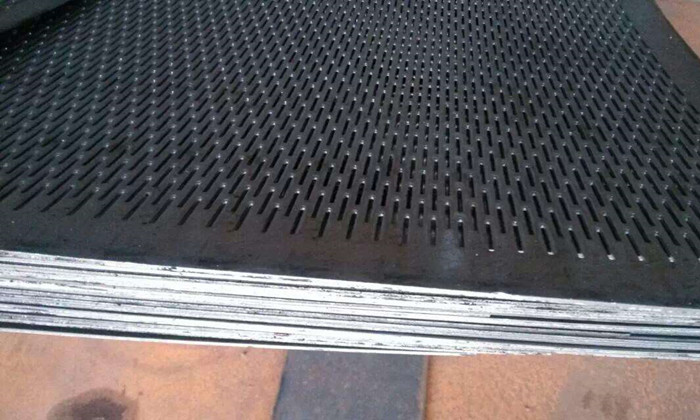How to Effectively Prevent Perforated Steel Sheets from Rusting: Complete Rust-Proofing Guide
Source:www.cn-psp.cnAuthor:河北森驰公司 Last updated:2025-06-14 15:20:58 Browse:
Perforated steel sheets are widely used in industrial and architectural applications such as soundproofing, safety protection, ventilation, and decoration. These sheets are typically made from iron plates processed with CNC punching machines and precision molds, resulting in accurate hole patterns, neat appearance, and practical functionality.
However, due to the nature of iron, these sheets are highly prone to rust when exposed to moisture or humidity. Without proper rust prevention measures during storage, production, and use, perforated steel sheets can corrode quickly, compromising their performance and significantly shortening their service life.
To ensure durability and long-term performance, the following rust prevention methods are essential:
1. Control Starts with Raw Material Storage
Rust prevention begins at the source—how the raw materials are handled before production. The iron plates used for perforated steel sheets are vulnerable to oxidation during transportation and storage if exposed to moisture or humid air. Here are key practices to mitigate this risk:
Dry, well-ventilated storage: Keep materials in moisture-proof warehouses, away from rain and damp environments.
Prompt usage: Use untreated iron sheets shortly after delivery to avoid long-term exposure.
Layer separation: Use wooden pallets or moisture-resistant film between stacked sheets to reduce direct contact and condensation risk.
2. Protective Measures During Production
During the perforation process, the steel sheet undergoes high mechanical pressure and friction. Without protection, this can lead to surface oxidation and affect both appearance and accuracy. Proper protection includes:
Application of anti-rust oil or cutting fluid: Coating the surface before punching forms a barrier against air and humidity, while also providing lubrication for cleaner cuts and improved tool life.
Controlled working environment: Avoid processing in high-humidity conditions or during rainy seasons; keep workshops ventilated to minimize rust risk.
Post-process cleaning: Clean and dry sheets promptly after punching to remove residual oil or fluid and prevent corrosion from chemical residues.

Perforated steel sheets
3. Surface Treatment for Extended Service Life
For perforated steel sheets used in decorative or outdoor environments, additional surface treatments are highly recommended to extend their lifespan:
Anti-rust paint coating: A layer of industrial-grade anti-corrosion paint forms a protective seal against moisture and air.
Powder coating (electrostatic spray): High-temperature baked powder forms a thick, even layer that not only resists rust but also enhances the product's visual appeal.
Hot-dip galvanization: Submerging the sheet in molten zinc creates a strong protective layer, ideal for outdoor or marine applications. This treatment can extend the life of perforated steel sheets by more than ten years.
4. Treatment Options for Rusted Steel Sheets
Even if rust has already formed, the affected perforated steel sheets can still be salvaged through chemical or mechanical treatment methods:
Acid washing: A diluted solution of hydrochloric or phosphoric acid can react with rust to clean the surface thoroughly.
Sandblasting or grinding: Physically removing rust allows for the restoration of smoothness and prepares the sheet for new coatings.
Post-treatment protection: After rust removal, sheets should be neutralized, dried completely, and coated with anti-rust agents to prevent re-oxidation.
5. Long-Term Maintenance and Usage Tips
Rust prevention is an ongoing process. Even after installation, perforated steel sheets benefit from regular maintenance:
Routine cleaning: Remove dust, oil, or moisture build-up to prevent corrosion.
Prompt repair of surface damage: Re-coat any scratches or peeled areas to restore the protective barrier.
Consider environmental conditions: In highly humid or corrosive environments, consider using stainless steel sheets or higher-grade anti-corrosion finishes.
Conclusion
Preventing rust in perforated steel sheets is not just about applying surface protection—it's a comprehensive process involving material storage, production techniques, surface finishing, and ongoing maintenance. By carefully implementing these steps, manufacturers and users can significantly improve the performance, longevity, and visual appeal of their products.
Ultimately, effective rust prevention enhances product reliability and adds long-term value for your projects or clients. For customized processing, professional anti-corrosion solutions, or expert consultation on perforated steel sheets, feel free to contact our team—we provide comprehensive services from design to finished product.
